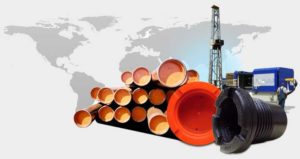From scorching summer sun and the hurricane season, to blinding blizzards and hard freezes, weather can bring with it a variety of problems; therefore, line pipe protection should be considered long before severe weather strikes.
Line Pipe Protection Products
Companies should take steps to protect their oil and gas pipelines from the cold to avoid issues that can arise during winter months and comply with API standards. MSI Pipe Protection Technologies has a variety of products to help them do just that. Below are a few things that companies should consider when it comes to line pipe protection during harsh winter weather.
Insulation
This is one of the most common line pipe protection methods. Insulation involves wrapping pipe with materials such as fiberglass, perlite, mineral wool, elastomeric foam, or cellular glass. Such materials can stand up to bitter cold, and most are used to insulate heat exchangers and other sensitive equipment. With drill pipe protectors, oilfield workers can touch pipe surfaces without injury.
Heat Tracing
Simply put, heat tracing is the use of heat to keep a pipe at a certain temperature. Most companies use electricity to keep pipes warm via thread protectors and heat cable or tape. The heat tracing technique is advantageous for several reasons. First, it facilitates uniform heat application throughout the entire length of pipe. Second, it’s highly controllable. Finally, the technique is more cost-efficient than pipe flushing methods.
Process Heating
In some cases, process heating can keep gas, water, and oil pipes from freezing during the winter. The technique is most effective on large-diameter pipe where heat tracing may not be practical. Glycol, water, and thermal oil are all common heating media which can be poured into freeze-prone piping.
Heated Enclosure
Another effective pipe protection strategy is to encase the pipe in heated enclosures. This method is especially effective when winterizing outdoor piping systems and tanks. While it’s possible to use solid fuel or electricity to keep the internal temperature above freezing, workers shouldn’t remove the surrounding snow because it provides insulation as well. Some oil and gas suppliers bury piping underground as a form of heated enclosure protection.
Draining Pipe
If the above options are inappropriate, pipe can be drained to reduce the risk of freezing and bursting. After draining, they should be insulated to prevent condensation and lubricated to prevent damage to internal parts. If a company takes such an approach, it’s important to use the correct type of lubricant.
Line Pipe Protection with MSI
These are just some of the ways oil and gas companies can succeed in line pipe protection during winter months, and other extreme weather conditions. For information on all our pipe protection products, and to find the products and equipment most suitable to your company’s industry needs, contact MSI to speak with one of our customer service experts.
Call us toll free at 877-276-9208, or request a quote online. We’re your industry standard leader, and are always ready to assist you!




